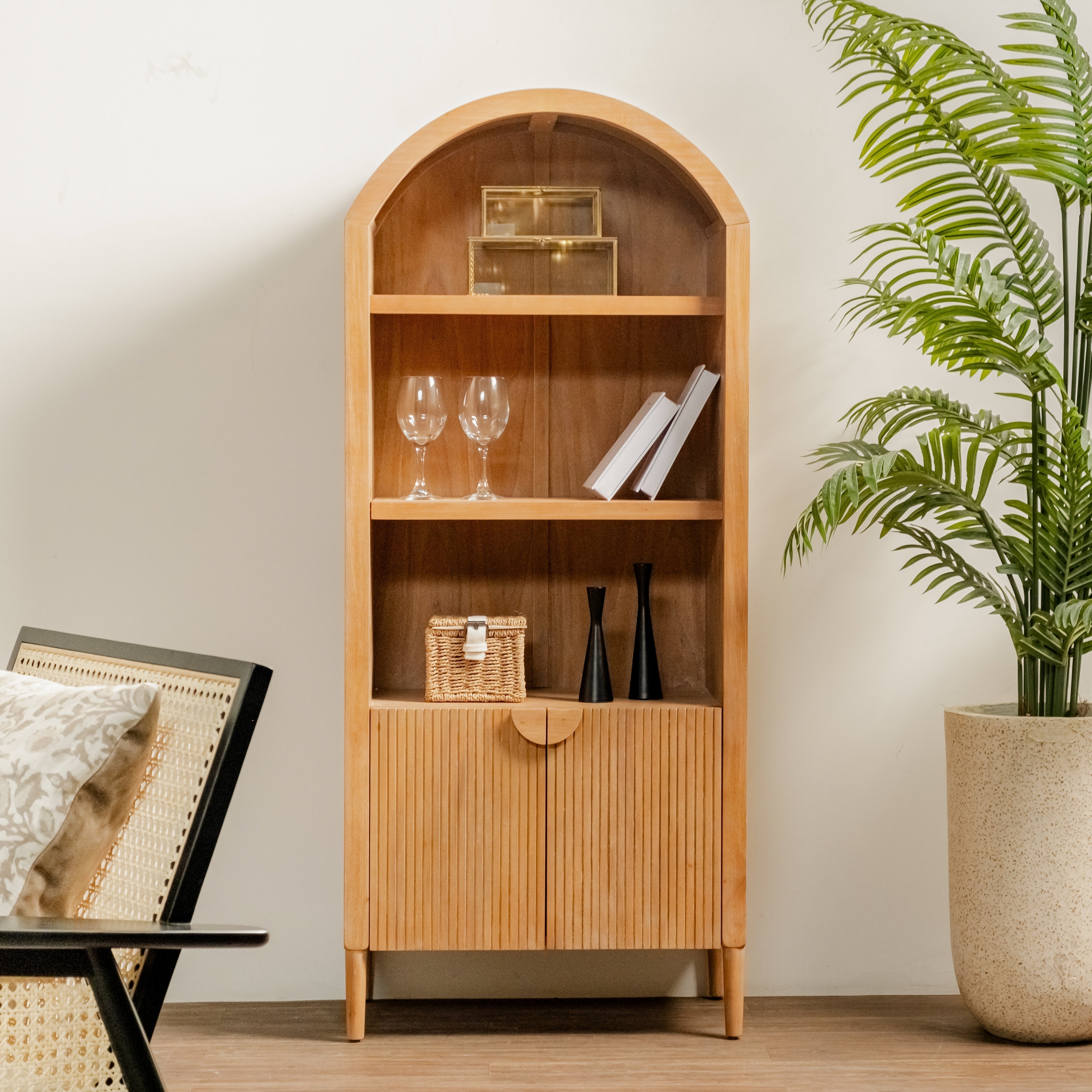The Soft Revolution: Designing Spaces That Hug You Back
Step into a room where the furniture doesn’t just fill a space—it embraces it. The rigid, angular lines of yesterday’s minimalist interiors are giving way to something gentler: a wave of soft, curved furniture that feels as good as it looks. It’s not just a style shift—it’s a quiet revolution, one rooted in comfort, emotion, and real-life practicality.
A New Kind of Comfort
In today’s fast-paced world, our homes are evolving into spaces of restoration. More than ever, people are looking for furniture that supports that emotional need for peace and softness—both visually and physically.
Curved silhouettes—like cocoon-style sofas, round tables, and arched tall cabinets with doors and shelves—offer a sense of flow and comfort that rigid pieces often lack. Whether you're winding down after work or welcoming friends into your home, these shapes create an atmosphere of ease and relaxation.

What makes them even better? Many are now available in the affordable furniture category, meaning you don’t have to sacrifice style or serenity to stay on budget.
Why We’re Drawn to Curves
There’s a reason curved forms feel so intuitive. Psychologists have long found that humans naturally associate rounded shapes with safety, softness, and harmony. They remind us of the organic contours found in nature: river stones, rolling hills, even the curve of a sheltering arm.
This emotional connection is part of what makes curved furniture some of the best furniture you can add to your space—not just beautiful, but quietly supportive in how it makes you feel. A round-edge chair can become your favorite reading nook. A wavy dresser might turn a basic bedroom into a calming sanctuary.
Practical Comfort: More Than a Pretty Shape

Rounded design isn’t just about aesthetics—it’s deeply practical. And for families, apartment-dwellers, or anyone maximizing space, that matters.
Here’s why soft silhouettes work so well in everyday life:
-
Improved flow: Rounded edges allow for smoother movement in small or busy rooms.
-
Space savers: A compact round table or a slim, can provide essential function without visual heaviness.
-
Child-safe design: Softer corners mean fewer injuries for kids (and adults, too).
- Natural zoning: Curved pieces subtly define areas—like a curved armchair that signals a reading corner—without bulky partitions.
The beauty of curved furniture is that it meets you where you are. It offers a sense of ease—whether you live in a studio apartment or a spacious home—and it's now widely accessible through brands that prioritize affordable furniture with thoughtful design.
Bringing the Curve Home: How to Style It
You don’t need to reinvent your home overnight. Integrating soft lines can be as simple as:
-
Adding a round coffee table or curved bench to your entryway.
-
Swapping a hard-edge sideboard for a tall cabinet with doors and shelves with gentle curves and warm wood grain.
-
Playing with textures—bouclé, velvet, and cane—alongside soft silhouettes to create visual comfort.
- Keeping tones neutral so the shapes can shine.
Mixing curved forms with clean lines helps create balance. Pair your cozy boucle chair with a sleek storage piece, or layer a soft rug under a sculptural table. The goal is to let form and function work in harmony.
Casewood’s Approach: Comfort with Character
At Casewood, we’re driven by a belief that the best furniture supports how you live—not just how your space looks. That’s why many of our designs feature soft edges, sculpted profiles, and intentional materials like warm wood, rattan, and subtle matte finishes.

You’ll find affordable furniture pieces that feel anything but basic—like a tall cabinet with doors and shelves that doubles as both storage and sculptural centerpiece. Every curve is there for a reason: to make your home more livable, more beautiful, and more you.
The soft revolution isn’t about chasing trends. It’s about designing homes that feel like an extension of you. Spaces that wrap you in warmth, let you move freely, and welcome you back at the end of every day.
So the next time you choose a piece of furniture, ask yourself: Does this just fill a space—or does it embrace it?



